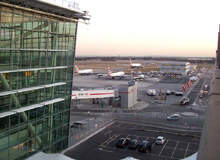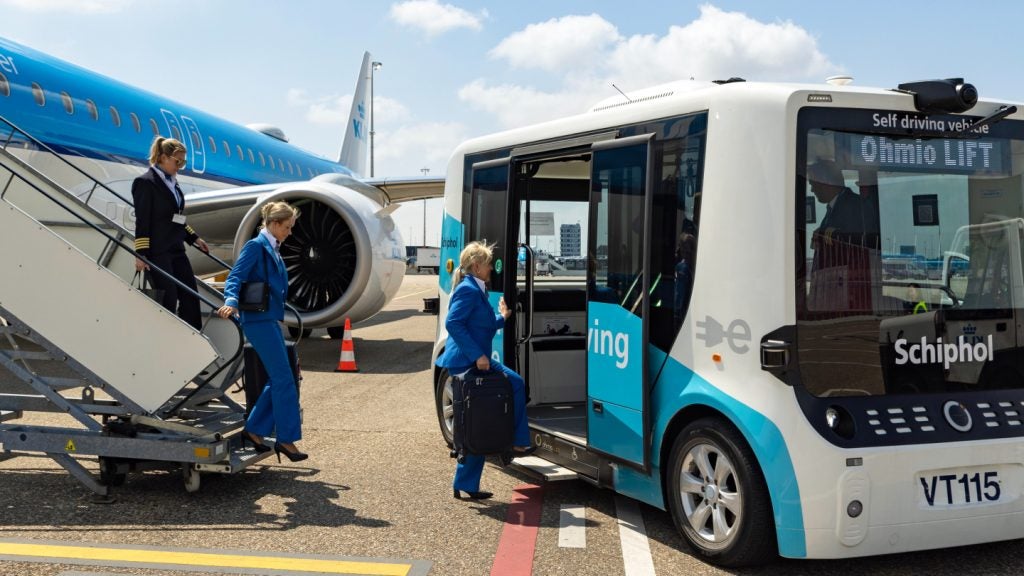
At Terminal 5, the security gates are a quick and pleasant experience. With the new high-tech equipment, passengers do not have to have to unpack their laptops and trays are provided automatically. The distance to the passenger gate is now around five minutes by foot, or a 45-second ride on a subterranean unmanned shuttle if the flight is departing from the satellite building on the apron, known as Terminal 5B. Frequent flyers of BA have six lounges available to them, one of the biggest complexes of its kind in the world. Altogether 2,500 passengers, a quarter more than previously, can use the luxurious facilities.
Teething troubles
The troubles of Terminal 5’s opening day are a distant memory. The problems BA experienced in March with the terminal’s baggage system and with the familiarisation of staff are well documented, but far less well known is the behind-the-scenes work carried out by BA and BAA in the months since to smooth out operations in the new terminal.
“We structured a very open-book approach with the airport operator, where we set up detailed operational meetings every day looking at all the metrics the terminal gave us,” explains Ashley Cowen, area general manager of Asia/Middle East/Africa and former general manager of Heathrow operations for BA. “That meant that we could review how long it was taking by the second to check in, bag drop, go through security, board or disembark a flight. The whole process was broken down into smaller subprocesses, each of which were reported and reviewed on a daily basis. We were then able to focus on key elements that needed attention.”
More operations were yet to be moved into Terminal 5. In May, BA moved 4,000 short-haul pilots and cabin crew into a purpose-built crew report centre within the terminal. At the beginning of June it moved an additional 30 long-haul flights in, and then at the end of June an additional 12,000 cabin crew and pilots followed suit. Further long-haul flights were also moved from Terminal 4 in September and October.
Cowen explains that preparation work for the move to Terminal 5 began in September 2007 because the first component of the shift involved putting operational staff in place. “It was on 11 January 2008 that we did our first move, by putting the airline’s Heathrow control centre into Terminal 5,” he says. “That was essentially the centre that allocates all the work to BA staff around the campus. If you like, that was our first live staff move. But there were a few other smaller moves that happened before 27 March.”
How well do you really know your competitors?
Access the most comprehensive Company Profiles on the market, powered by GlobalData. Save hours of research. Gain competitive edge.

Thank you!
Your download email will arrive shortly
Not ready to buy yet? Download a free sample
We are confident about the unique quality of our Company Profiles. However, we want you to make the most beneficial decision for your business, so we offer a free sample that you can download by submitting the below form
By GlobalDataBaggage systems
He admits that by far and away the biggest improvement BA saw since the March opening was with the baggage system and the technical fixes made to it.
“This was much more about software than about hardware,” he says. “We saw a step change in baggage handling both in departure and arrival. Very soon, around the beginning of April, we were already seeing the benefits of delivering the luggage to the carousel in arrivals before the passengers were arriving there. That’s a theme that’s run right through our setup and something we can pride ourselves on in terms of customer service levels now. On a lot of flights the bags are there before you are, so you can collect them on arrival.”
According to Cowen, BA followed a plan where it was “always zeroing in on the top five issues. As those were addressed and whittled down, the top five issues would change, until the most difficult hurdles had been completely overcome.”
Cowen is happy with the impact of Terminal 5’s operation on the wider Heathrow community. “Going into the summer we were achieving record punctuality for BA at Heathrow. And because we are a sizeable player at Heathrow that meant the whole of the airport’s performance actually got better. The continued improvement at Terminal 5, the operation still at Terminal 1, and then the long-haul flights still continuing at the time from Terminal 4 – the whole of the campus has benefited from the work we’ve done at Terminal 5.”
He says BA now often has ‘more than 90% of Heathrow flights leaving on time, by the industry measure – something we’ve never seen before. That has put us in a really good position as we prepare to move Terminal 1 flights to an upgraded facility in Terminal 3.’
He also emphasises BA’s return to its original plan in the aftermath of the opening days, and how the future operational success of the terminal was key to the design of the building. “The point for us is that we were very confident in the design itself and all the processes built into it. After all, we spent nearly three years getting there.”
During that phase, says Cowen, BA made use of consultants that had strong experience in other airport moves, and a couple of smaller consultants to make sure the training programme and the familiarisation processes it used for its staff involved sharing best practice. “But after the well publicised problems we encountered, we were determined to go back to the good designs we had previously laid out. “There were no consultants brought in afterwards. We felt we achieved more value in preparing ourselves for this. For example, large parts of our baggage system are now doing precisely what they were originally designed to do. It was all in the design.”
Operational excellence
This view is backed by Mark Murphy, who last April was installed as operations director of Terminal 5. “From a technological point of view, we haven’t changed that much since we opened,” he says. “Operationally, we occupy the space now that we envisaged when we launched. But there have been some changes, notably including joint contingency planning. Naturally BAA works physically very close to BA in the building and we have control centres located within the building, with meeting rooms in-between. So when we’re in contingency mode, we can interact with each other easily and quickly.”
Murphy also refers to positive customer feedback. “I’m aware that BA’s own customer surveys are showing strong performance, and we’re also finding that the vast majority of people are reporting great experiences as they go through Terminal 5, which is still, remember, in its relative infancy. However, the positive feedback has been a trend for a few months, pretty much from April onwards, in step with the increase in flights. In terms of continuity, though, we’ve also had a number of disruptions where Terminal 5 as an operations building has proven that it can cope extremely well.”
Murphy says BAA is working closely with BA and “had a very successful summer and first Christmas, now we’re focusing on the first anniversary,” but, like Cowen, he points out that external help in trouble-shooting hasn’t so far been necessary from BA’s point of view. “We didn’t bring in consultants from outside. It was more of a case of continued work with the operational readiness team, and ensuring the baggage teams, IT teams and operational teams are talking to each other, making sure everything’s properly coordinated. That whole effort just became stronger and stronger as it went on. There was no need to involve any third parties.” BA has no more staff or flights to move into Terminal 5. But Cowen is looking forward to the new Terminal 5 ‘C’ satellite facility concourse under construction at the moment, which will give BA’s passengers more on-pier services, and will be connected by an underground railway to Terminal 5 ‘A’ and ‘B’ which are already in full use.
“That’s a large part of our project work as it stands now,” he says. “We’re never going to say that we’re resting on our laurels, or that we’ve cracked it. We are very pleased and proud of the improvements we have made. Our customers are telling us their experiences are very good and the staff feedback about the environment they’re working in is good too. All the signals are promising.”







